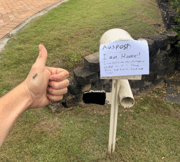This bold move solves Medicare and Centrelink backlog: ‘We’re headed in the right direction’
By
Seia Ibanez
- Replies 22
In a remarkable turnaround that's sure to bring relief to countless Australians, Government Services Minister Bill Shorten has announced a significant victory in the battle against the daunting backlog of Medicare and Centrelink claims.
For those caught in the frustrating wait for essential services, this news heralds a new era of efficiency and responsiveness from Services Australia.
The backlog, which once loomed like a mountain over the department, has been dramatically reduced by 66 per cent as of 21 July, from a staggering 1.35 million claims in early February to 460,000.
So, what's the secret behind this success?

It's a combination of strategic staffing and a commitment to service delivery that makes all the difference.
Late last year, the Federal Government made a decisive move by adding 3,000 permanent staff members to the Services Australia team.
These recruits have processed 1.4 million claims and answered 1.9 million calls.
But the efforts didn't stop there. The government's pledge of $1.8 billion in the 2024-25 Budget to bolster service delivery, which includes funding for an additional 4,030 staff in 2024-25 and 3,530 staff in 2025-26, is already showing promising results.
This investment in human resources is paying off, as evidenced by the significant improvements in processing times across the board.
Let's talk numbers: Paid Parental Leave claims processing times have plummeted by 84 per cent, from 25 days to four days.
Even JobSeeker claims, which have been notoriously delayed, are now being processed 73 per cent faster, down from 22 days to just six.
The impact of these improvements is also felt in customer service. Centrelink calls are being answered around six minutes faster, and Medicare customer calls are seeing a nine-minute improvement compared to January.
The congestion messaging on Centrelink lines has been cut by 58 per cent, and a majority of customers (62 per cent) are being served within 15 minutes at service centres across the nation.
'We absolutely acknowledge the frustration of people waiting for payments, but for the first time in a long time, we are headed in the right direction,’ Shorten stated.
The journey to this point hasn't been easy. In April, Shorten highlighted the department's achievement in halving the backlog by 500,000 in just 10 weeks.
This breakthrough was crucial for Services Australia to gain the upper hand on the pile-up of claims that had been accumulating since January.
 Have you noticed an improvement in processing times? Are you still facing challenges? Share your thoughts in the comments below!
Have you noticed an improvement in processing times? Are you still facing challenges? Share your thoughts in the comments below!
For those caught in the frustrating wait for essential services, this news heralds a new era of efficiency and responsiveness from Services Australia.
The backlog, which once loomed like a mountain over the department, has been dramatically reduced by 66 per cent as of 21 July, from a staggering 1.35 million claims in early February to 460,000.
So, what's the secret behind this success?

Minister Bill Shorten announced victory in the battle against Medicare and Centrelink claims backlog. Credit: Shutterstock
It's a combination of strategic staffing and a commitment to service delivery that makes all the difference.
Late last year, the Federal Government made a decisive move by adding 3,000 permanent staff members to the Services Australia team.
These recruits have processed 1.4 million claims and answered 1.9 million calls.
But the efforts didn't stop there. The government's pledge of $1.8 billion in the 2024-25 Budget to bolster service delivery, which includes funding for an additional 4,030 staff in 2024-25 and 3,530 staff in 2025-26, is already showing promising results.
This investment in human resources is paying off, as evidenced by the significant improvements in processing times across the board.
Let's talk numbers: Paid Parental Leave claims processing times have plummeted by 84 per cent, from 25 days to four days.
Even JobSeeker claims, which have been notoriously delayed, are now being processed 73 per cent faster, down from 22 days to just six.
The impact of these improvements is also felt in customer service. Centrelink calls are being answered around six minutes faster, and Medicare customer calls are seeing a nine-minute improvement compared to January.
The congestion messaging on Centrelink lines has been cut by 58 per cent, and a majority of customers (62 per cent) are being served within 15 minutes at service centres across the nation.
'We absolutely acknowledge the frustration of people waiting for payments, but for the first time in a long time, we are headed in the right direction,’ Shorten stated.
The journey to this point hasn't been easy. In April, Shorten highlighted the department's achievement in halving the backlog by 500,000 in just 10 weeks.
This breakthrough was crucial for Services Australia to gain the upper hand on the pile-up of claims that had been accumulating since January.
Key Takeaways
- Minister Bill Shorten has announced that Services Australia has significantly reduced the backlog of Centrelink and Medicare claims.
- The department has cut down processing times for several claims, with some claim wait times being slashed by up to 84 per cent.
- An additional 3,000 permanent staff members were added last year to improve claim-processing times and access to services.
- The government has invested $1.8 billion in the 2024-25 Budget to further enhance service delivery, showing early positive results in reducing the backlog and improving wait times.







